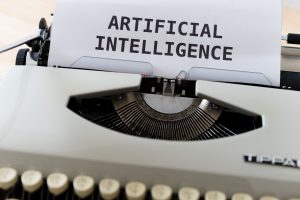In the past, Artificial Intelligence was just something imaginary that we saw in science fiction movies. Currently, it is part of our daily lives.
Artificial Intelligence is the ability of, through various technologies, machines to be able to simulate human intelligence and behavior. Through technologies such as neural networks, algorithms, among others, machines can develop reasoning, perception, plan, interact and develop skills for decision making.
Here also comes the Big Data (large volumes of data), which together with models and statistical methods, allow machines to read and interpret patterns and information to later learn in an automated way. Some of the methods used by artificial intelligence:
– Machine Learning: It uses algorithms that quickly and autonomously create knowledge representation models that analyze a large and complex volume of data, providing fast and accurate results, which allows the machine to learn from this data to make informed decisions.
– Deep Learning: It is a branch of Machine Learning that “teaches” machines to act and interpret data by themselves, through speech and pattern recognition, image identification and predictions. That is, through neural networks.
– Neural Networks: Algorithms that mimic the neural network of the human brain. These recognize patterns and correlations in the data, grouping them, classifying them, and finally, learning from mistakes and continuously improving over time. They have several applications, namely the summary of documents and the recognition of faces and speech with great precision.
One of the main objectives of Artificial Intelligence is to make people’s lives easier and help companies to optimize and simplify business processes.
Some examples of applications of Artificial Intelligence in our daily lives:
– Chatbots: The online service, on some sites, is carried out by robots, through the well-known chatbots. These answer questions such as, for example, what is the delivery time for a given order, just showing the order number.
– Automatic messages: Allows the response to customers through automatic messages on social networks, such as WhatsApp, providing responses in real-time.
– Virtual assistants: Virtual assistants present on mobile phones, tablets and others, such as Siri and Alexa, who answer questions such as: What will the weather be like tomorrow?; How much is 1500×400?; How do you say hello in spanish?
– Facial recognition: To carry out operations such as unlocking your mobile phone, approving a transaction on your bank account or downloading a new APP, if programmed, facial recognition is used.
– GPS: There are several GPS devices used to indicate faster routes, with or without tolls, where there are petrol stations, where there are accidents.
– Optimization of production processes: You can know how to maximize production and how to predict failures in maintenance. It allows them to detect and, in turn, prevent defects on the production line to avoid unnecessary costs.
– Hotspots: Through Artificial Intelligence you can forecast sales: for example, find out which are the best hotspots to promote your company’s products. Making sales teams more effective by communicating with the right persona, in the right place.





